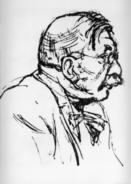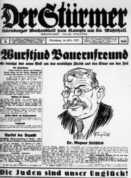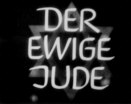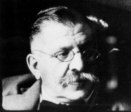| From Stigmatization to the Enemy Incarnate | |||||
| Against the background of social insecurity and upheavals during the Weimar Republic on account of economic crises, inflation and mass unemployment, society became intensively polarized in the late 20s, with opposing ideologies contesting all spheres of life. The more undecided the political balance of power became, the more radical and fierce the political battles were fought, not least, of course, on the level of social and sexual reforms. Sexual reformers were subjected to attacks by conservative Christian forces. Furthermore, demagogic attacks - likewise in the name of "healthy national feelings" - by Nazi zealots were on the increase. As a Jew, a Socialist and a wealthy Institute director, Magnus Hirschfeld, the sexual reformer, provided the ideal stereotypical enemy incarnate. He increasingly became a public target not only as "the morally corruptive Jew" but also as "the homosexual". His work was associated with "the Jewish conspiracy" and seen as constituting "a public danger". With public opinion increasingly falling under the sway of Nazi beliefs, the Press stepped up its smear campaign: taunts, vicious libel, personal attacks and serious threats - also levelled at the "Institute for Sexual Sience". The following documents illustrate aspects of forming public opinion - from the initial signs of stigmatization to hatred, libel, inflammatory rabble-rousing and personal attacks.
|
|||||
| X | ||
 | ||
| 1 | ||
 | ||
| 2 | ||
 | ||
| 3 | ||
 | ||
| 4 | ||
 | ||



